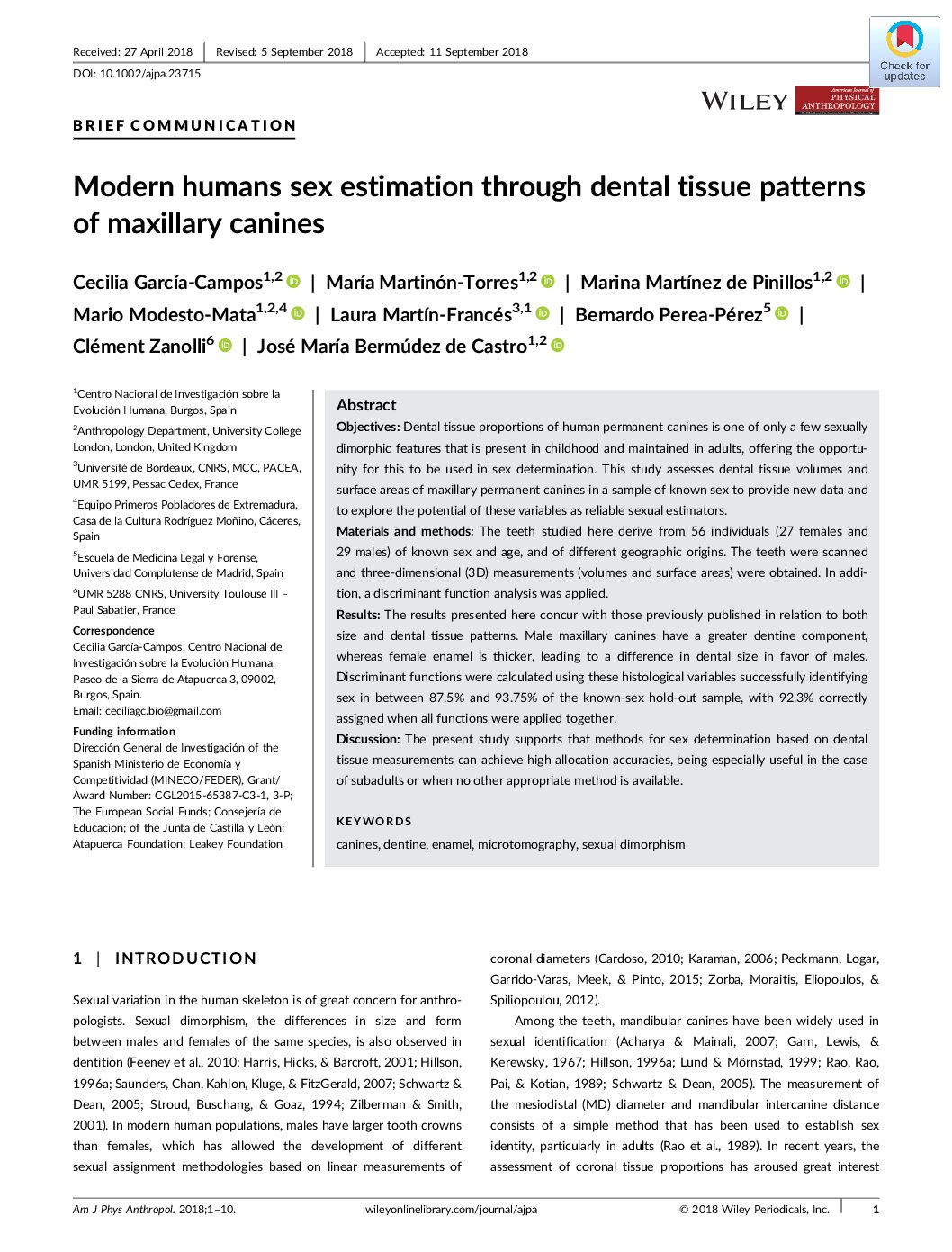Overview
| Journal | American Journal of Physical Anthropology |
| Authors | García‐Campos, Cecilia; Martinón‐Torres, María; Martínez de Pinillos, Marina; Modesto‐Mata, Mario; Martín‐Francés, Laura; Perea‐Pérez, Bernardo; Zanolli, Clément; Bermúdez de Castro, José María |
| Volume | 167 |
| Issue | 4 |
| Year | 2018 |
| DOI | 10.1002/ajpa.23715 |
Abstract
Objectives Dental tissue proportions of human permanent canines is one of only a few sexually dimorphic features that is present in childhood and maintained in adults, offering the opportunity for this to be used in sex determination. This study assesses dental tissue volumes and surface areas of maxillary permanent canines in a sample of known sex to provide new data and to explore the potential of these variables as reliable sexual estimators. Materials and methods The teeth studied here derive from 56 individuals (27 females and 29 males) of known sex and age, and of different geographic origins. The teeth were scanned and three-dimensional (3D) measurements (volumes and surface areas) were obtained. In addition, a discriminant function analysis was applied. Results The results presented here concur with those previously published in relation to both size and dental tissue patterns. Male maxillary canines have a greater dentine component, whereas female enamel is thicker, leading to a difference in dental size in favor of males. Discriminant functions were calculated using these histological variables successfully identifying sex in between 87.5% and 93.75% of the known-sex hold-out sample, with 92.3% correctly assigned when all functions were applied together. Discussion The present study supports that methods for sex determination based on dental tissue measurements can achieve high allocation accuracies, being especially useful in the case of subadults or when no other appropriate method is available.


